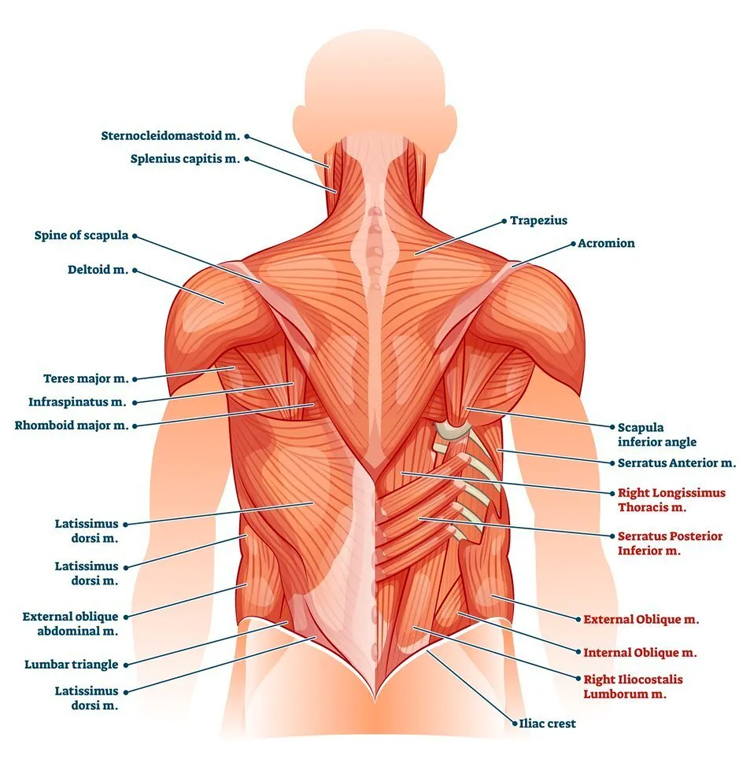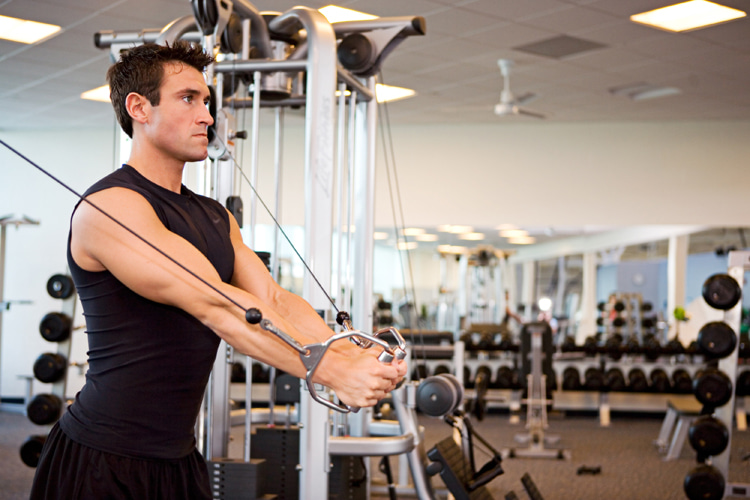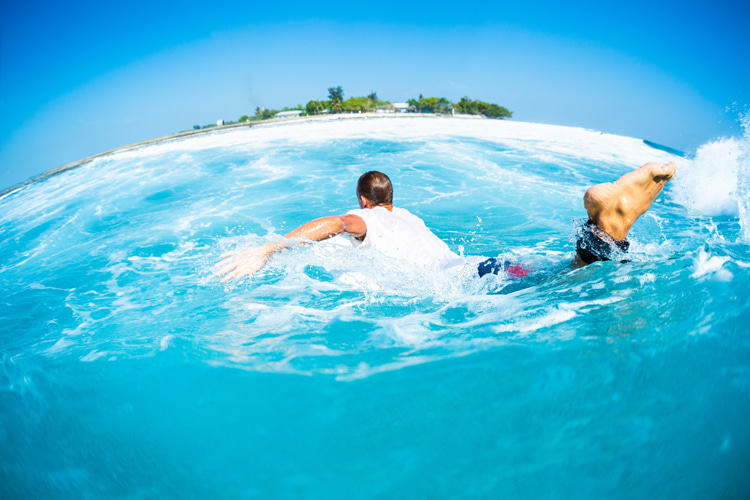The risk of injury is always present in surfing. Among the common issues surfers face, back pain is a persistent and debilitating problem frequently mentioned by the community.
But why do wave riders feel sore a few hours after a surf session?
What are the aching muscles? What can surfers do to prevent and treat back pain? Is aging a relevant factor?
Causes of Back Pain in Surfers
Paddling Position and Muscle Imbalance
A significant portion of a surfer's time is spent paddling, during which they lie prone on the surfboard and use their arms to propel themselves through the water.
This position requires the surfer to hyperextend their lower back to elevate their head and chest, placing stress on the lumbar spine.
Over time, this can lead to structural imbalances, as the muscles in the lower back become overworked and tight while the abdominal muscles remain underutilized and weak.
Impact Forces and Compression
The dynamic nature of surfing exposes the spine to repeated compressive forces.
These forces are generated during paddling, taking off and popping up, carving, landing aerial maneuvers, wiping out, or when a surfer's body impacts the water surface at high speeds.
The cumulative effect of these forces can cause strain on the discs and ligaments in the spine, leading to discomfort and pain.
Torque and Rotational Forces
Surfing requires continuous twisting and turning motions to maintain balance and perform maneuvers.
These rotational forces place significant stress on the spine, especially in the thoracic and lumbar regions.
As a result, the surrounding muscles, ligaments, and joints can become irritated or injured, contributing to back pain.

Muscles at Stake
Several muscle groups are involved in the development of back pain in surfers, including:
Erector Spinae
These muscles run along the length of the spine and are responsible for maintaining an upright posture.
They play a crucial role in the hyperextension required during paddling, and the repetitive stress placed on them can lead to muscle strain, tightness, and pain.
Quadratus Lumborum
The quadratus lumborum is a deep muscle in the lower back that helps stabilize the lumbar spine.
It is particularly susceptible to strain and tightness in surfers due to the extended periods of hyperextension and rotation.
Abdominal Muscles
The rectus abdominis and oblique muscles provide core stability and support for the spine.
Weakness and imbalance in these muscles can contribute to excessive lumbar extension and rotation, exacerbating back pain.
Hip Flexors
The iliopsoas muscle group, which includes the psoas major and iliacus muscles, is responsible for hip flexion.
Prolonged time spent in the prone position can cause these muscles to become tight and shortened, leading to an increased anterior pelvic tilt and additional strain on the lower back.

Prevention and Treatment Strategies
There are several things you can do to mitigate the famous and highly uncomfortable lower back pain.
Strengthening and Stretching Exercises
A well-rounded exercise program that targets the core, lower back, and hip muscles can help prevent and alleviate back pain in surfers.
Strengthening exercises like planks, side planks, and bird-dog extensions can help build a stable core.
Additionally, regular stretching of the hip flexors, quadratus lumborum, and erector spinae can reduce muscle tightness and improve flexibility.
Yoga and Pilates
Both yoga and Pilates are effective in enhancing core strength, flexibility, and overall muscle balance.
Incorporating these practices into a surfer's routine can help prevent muscular imbalances and reduce the risk of back pain.
Proper Paddling Technique
Adjusting the paddling technique can help minimize strain on the lower back.
Instead of relying solely on back extension, surfers should focus on engaging their core muscles and maintaining a more neutral spine position.
This can be achieved by slightly lifting the chest off the board, keeping the head in line with the spine, and utilizing a more efficient paddling stroke.
Cross-Training
Incorporating other forms of exercise, such as swimming, cycling, or resistance training, can help surfers develop a balanced musculature and reduce the risk of injury.
Cross-training also provides an opportunity to improve cardiovascular fitness and overall strength, which can benefit surfing performance.
Myofascial Release and Massage
Surfers can benefit from regular myofascial release techniques, such as foam rolling or self-massage, to alleviate muscle tightness and improve flexibility.
Targeting the lower back, hip flexors, and surrounding muscles can help release tension and promote better spinal alignment.
Rest and Recovery
Allowing adequate time for rest and recovery is essential for preventing and healing back pain.
Surfers should listen to their bodies and take breaks when needed, allowing muscles to repair and recover.
Incorporating active recovery techniques, such as light stretching or walking, can also help maintain flexibility and muscle balance during rest periods.
Aging
Back pain in surfers can indeed become worse with aging, as it can for individuals in other sports or activities.
As people age, they naturally experience changes in their musculoskeletal system that can contribute to an increased likelihood of experiencing pain or discomfort.
Some factors contributing to worsening back pain with age include:
- Degenerative Changes: With age, the discs between the vertebrae in the spine can lose their elasticity and ability to absorb shock effectively. This degeneration can lead to a reduced cushioning effect, increasing the likelihood of back pain.
- Muscle Loss: As we age, our muscles tend to lose strength and mass, a process called sarcopenia. This can lead to muscle imbalances and reduced core strength, making it more challenging to maintain proper posture and spinal alignment, which can contribute to back pain.
- Reduced Flexibility: Age-related changes in connective tissue can lead to a decrease in flexibility, making it more difficult for muscles and joints to move through their full range of motion. This lack of flexibility can exacerbate back pain in surfers, especially considering the repetitive movements and positions required in the sport.
- Slower Recovery: The natural aging process can slow down the body's ability to recover from injury or strain. This means that the muscles and tissues may take longer to heal after surfing sessions, making it more challenging to bounce back and increasing the risk of chronic pain.
However, it's essential to note that aging does not automatically mean worsening back pain for every surfer.
By maintaining a healthy lifestyle, engaging in regular physical activity, and implementing preventive measures, surfers can minimize the effects of aging on their back health.
Seek Professional Help
If back pain persists or worsens despite preventative measures and self-care, surfers should consult a healthcare professional, such as a physical therapist, chiropractor, or sports medicine specialist.
These professionals can provide a thorough evaluation and develop a tailored treatment plan to address the root causes of the pain.
